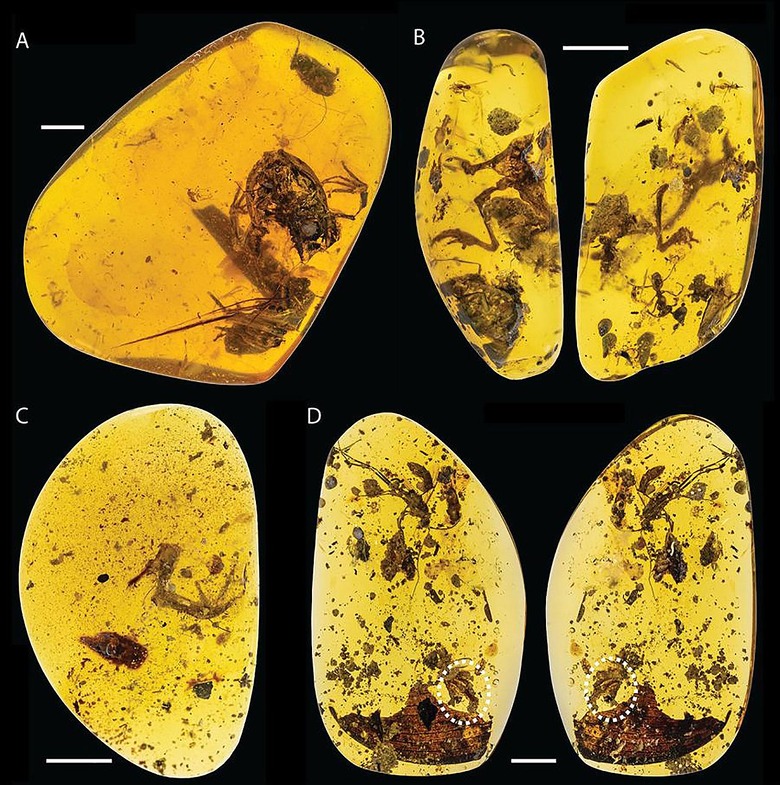World's oldest rain forest frogs stuck in amber
This week a report showed off the newest "world's oldest" rain forest frogs. "It was exhilarating to hold these small fossils up to the light to reveal the frogs within," said David C. Blackburn, one of several paleontologists that authored the study published this week. "We have few small and intact fossil frogs, and the primary specimen of Electrorana is a rare find."
The frogs found in the amber included in the study published this week were dated around 99-million years old. Each of the four frog specimens was alive in the mid-Cretaceous period. These are now the oldest frogs ever discovered in a tropical forest environment. The lot of them are extremely rare due to the extreme deterioration of materials in this ecosystem over short periods of time – much less millions of years.

ABOVE: Photograph images of four fossil frog specimens referred to Electrorana, including the holotype (A; DIP-L-0826) and three additional specimens (B: DIP-V-16119; C: DIP-V-16127; D: DIP-V-16121). Specimens in (B) and (D) are presented with two views of the amber specimen and the oval in (D) indicates the presence of the anuran specimen. Scale bars equal 5 mm.
Because these frogs were trapped in the sap of an ancient tree, they became encased in time. Amber, aka fossilized tree resin, has the ability to contain scientifically-friendly signs of life for extraordinary spans of time. The most famous pop-culture appearance of amber was in Jurassic Park, where they suggested that ancient mosquitos could retain dinosaur DNA.*
*Sadly, ancient mosquito remains cannot keep dinosaur DNA viable for cloning purposes, like the movie says. Instead, the closest amber's gotten to keeping remains safe is in situations like what we're looking at today. Ancient frogs' bones, for example, are kept in extremely good condition – and in three dimensions.
The report at hand describes amber deposits of northern Myanmar. There they show remains of a forest ecosystem during the Upper Albian period – that's approximately 99-million years ago. "Both plants, including mosses and bamboo-like monocots and invertebrates, including pisaurid spiders, onycophorans, dyspnoid harvestman, and coccoid scale insects preserved in Burmese amber provide evidence that this was a humid, warm, tropical forest ecosystem that contained at least some freshwater habitats," said the study.
ABOVE: "Video showing x-ray tomograms of holotype of Electrorana (DIPL-0826)" and "showing regions of interest of the holotype of Electrorana." Three scan-looks at this subject mashed into one bigger video.
For more information, take a peek at the latest issue of Nature. Published on June 14th, 2018 the study went by the name "The earliest direct evidence of frogs in wet tropical forests from Cretaceous Burmese amber." This paper was authored by Lida Xing, Edward L. Stanley, Ming Bai, and David C. Blackburn, and can be found under code doi.org/10.1038/s41598-018-26848-w (URL).
